2023
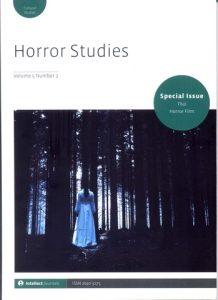 While folk horror has never been identified as exclusive to western cinema, most studies of the topic have so far been strongly aligned with western world-views, philosophies and methodologies. This makes it difficult to apply their findings to films made in non-Christian non-western countries, such as Thailand. This article discusses Banjong Pisanthanakun’s film Rang Song (The Medium) (2021) as a case in point to demonstrate how folk horror operates as a mode in Thai cinema. Building on the existing studies and modifying the current definitions of folk horror to apply them to the Thai cultural context, the article argues that Thai folk horror narratives are steeped in representations of the urban–rural divide that pit metropolitan Bangkok against low-income provinces (in particular, the northeastern region of Isan) and reflect on cultural tensions related to ethnicity and class.
While folk horror has never been identified as exclusive to western cinema, most studies of the topic have so far been strongly aligned with western world-views, philosophies and methodologies. This makes it difficult to apply their findings to films made in non-Christian non-western countries, such as Thailand. This article discusses Banjong Pisanthanakun’s film Rang Song (The Medium) (2021) as a case in point to demonstrate how folk horror operates as a mode in Thai cinema. Building on the existing studies and modifying the current definitions of folk horror to apply them to the Thai cultural context, the article argues that Thai folk horror narratives are steeped in representations of the urban–rural divide that pit metropolitan Bangkok against low-income provinces (in particular, the northeastern region of Isan) and reflect on cultural tensions related to ethnicity and class.

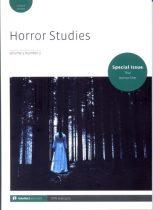
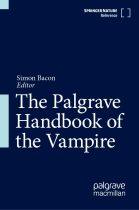
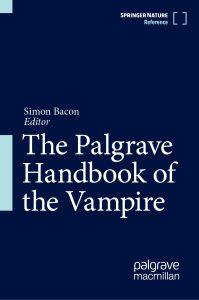 This article discusses the vampiric representation of the jiangshi in Hong Kong and Chinese cinema. The paper argues that while the jiangshi is a monstrous creature in its own right, over the years it has undergone a number of changes to align it with Western vampires. The article begins with a brief discussion of the jiangshi as a literary trope introduced in Chinese stories of the strange, particularly those written during the Qing period. The paper then examines three major shifts in cinematic representation of the creature from its early appearances in the 1980s Hong Kong cinema where it is compared and contrasted with Western vampires, and its post-Handover evolution that follows two different trajectories – reinventing the jiangshi as a pan-Asian horror icon and utilizing it as a tool of the Chinese government anti-superstition propaganda.
This article discusses the vampiric representation of the jiangshi in Hong Kong and Chinese cinema. The paper argues that while the jiangshi is a monstrous creature in its own right, over the years it has undergone a number of changes to align it with Western vampires. The article begins with a brief discussion of the jiangshi as a literary trope introduced in Chinese stories of the strange, particularly those written during the Qing period. The paper then examines three major shifts in cinematic representation of the creature from its early appearances in the 1980s Hong Kong cinema where it is compared and contrasted with Western vampires, and its post-Handover evolution that follows two different trajectories – reinventing the jiangshi as a pan-Asian horror icon and utilizing it as a tool of the Chinese government anti-superstition propaganda.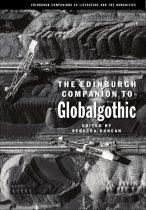
 This article discusses three major media forms that drive the globalisation of Asian Gothic: literature originally written in English, film, and original television series created specifically for global SVOD platforms like Netflix, Amazon Prime or HBO Go. The article focuses in more detail on three texts: a novel Ponti (2018) written by a Singaporean author Sharlene Teo, discussed in a larger context of texts featuring a Malay monster known as the pontianak; a Taiwanese film The Tag-Along (Cheng 2015) examined in relation to other East Asian films that feature forest-dwelling child-like spirits/demons that imitate human voice and lure their victims into the wilderness; and an Indonesian mini-series Halfworlds (2015) produced by HBO Asia and directed by Joko Anwar, which will be situated in the context of the director’s overall engagement with folk horror. The article argues that such productions promote an understanding of globalgothic in terms of texts that reconfigure elements of Gothic in order to negotiate transnational relationships from the socio-historical or cultural vantage point of a certain region, in this case the regions of East and Southeast Asia, and that these texts are to a large extent the results of specific production and distribution practices and strategies characteristic of global media.
This article discusses three major media forms that drive the globalisation of Asian Gothic: literature originally written in English, film, and original television series created specifically for global SVOD platforms like Netflix, Amazon Prime or HBO Go. The article focuses in more detail on three texts: a novel Ponti (2018) written by a Singaporean author Sharlene Teo, discussed in a larger context of texts featuring a Malay monster known as the pontianak; a Taiwanese film The Tag-Along (Cheng 2015) examined in relation to other East Asian films that feature forest-dwelling child-like spirits/demons that imitate human voice and lure their victims into the wilderness; and an Indonesian mini-series Halfworlds (2015) produced by HBO Asia and directed by Joko Anwar, which will be situated in the context of the director’s overall engagement with folk horror. The article argues that such productions promote an understanding of globalgothic in terms of texts that reconfigure elements of Gothic in order to negotiate transnational relationships from the socio-historical or cultural vantage point of a certain region, in this case the regions of East and Southeast Asia, and that these texts are to a large extent the results of specific production and distribution practices and strategies characteristic of global media.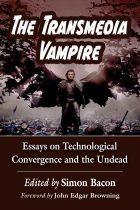
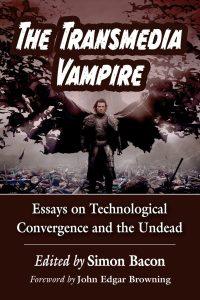

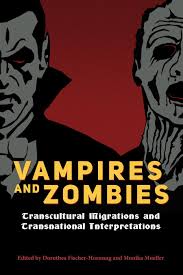 Only five out of all theatrically released Thai horror films before 2014 can be said to feature zombies at all and even then the identity of the creatures in question is not always consistent with what the international horror audiences have come to expect of a zombie icon. This begs the question as to why filmmakers in Thailand refuse to see zombie films as particularly frightening fantasies worthy of investment. It cannot be said that the local horror-film industry is diffident toward the monstrous or the uncanny, as indeed the typical horror film is almost completely dedicated to supernatural plots. Nor can it be said that the larger Thai film industry has but a small regard for the horror genre, as the Thai movie audience’s almost insatiable love of horror has convinced financial backers that horror films are a safe investment. Why, then, are Western-style zombies so rarely able to shuffle their way into the pantheon of Thai cinematic monsters?
Only five out of all theatrically released Thai horror films before 2014 can be said to feature zombies at all and even then the identity of the creatures in question is not always consistent with what the international horror audiences have come to expect of a zombie icon. This begs the question as to why filmmakers in Thailand refuse to see zombie films as particularly frightening fantasies worthy of investment. It cannot be said that the local horror-film industry is diffident toward the monstrous or the uncanny, as indeed the typical horror film is almost completely dedicated to supernatural plots. Nor can it be said that the larger Thai film industry has but a small regard for the horror genre, as the Thai movie audience’s almost insatiable love of horror has convinced financial backers that horror films are a safe investment. Why, then, are Western-style zombies so rarely able to shuffle their way into the pantheon of Thai cinematic monsters?
 This article revisits two of the most iconic Thai monstrosities, phi pop and phi krasue, whose changing representation owes equally as much to local folklore, as to their ongoing reinterpretations in popular culture texts, particularly in film and television. The paper discusses two such considerations, Paul Spurrier’s P (2005) and Yuthlert Sippapak’s Krasue Valentine (2006), films that reject the long-standing notion that animistic creatures belong in the countryside and portray phi pop and phi krasue’s adaptation to city life. Though commonplace, animistic beliefs and practices have been deemed incompatible with the dominant discourses of modernization and urbanization that characterise twenty-first century Thailand. Creatures like phi pop and phi krasue have been branded as uncivilised superstition and ridiculed through their unflattering portrayals in oddball comedies. This article argues that by inviting these monsters to relocate to contemporary Bangkok, Spurrier and Sippapak redefine their attributes for the modern urban setting and create hybrids by blending local beliefs and cinematic conventions. The creatures’ predatory character is additionally augmented by the portrayal of the city as itself vampiric. The article therefore reads these predatory spirits in parallel with the metaphor of the female vampire – a sexually aggressive voracious creature that threatens male patriarchal order and redefines motherhood.
This article revisits two of the most iconic Thai monstrosities, phi pop and phi krasue, whose changing representation owes equally as much to local folklore, as to their ongoing reinterpretations in popular culture texts, particularly in film and television. The paper discusses two such considerations, Paul Spurrier’s P (2005) and Yuthlert Sippapak’s Krasue Valentine (2006), films that reject the long-standing notion that animistic creatures belong in the countryside and portray phi pop and phi krasue’s adaptation to city life. Though commonplace, animistic beliefs and practices have been deemed incompatible with the dominant discourses of modernization and urbanization that characterise twenty-first century Thailand. Creatures like phi pop and phi krasue have been branded as uncivilised superstition and ridiculed through their unflattering portrayals in oddball comedies. This article argues that by inviting these monsters to relocate to contemporary Bangkok, Spurrier and Sippapak redefine their attributes for the modern urban setting and create hybrids by blending local beliefs and cinematic conventions. The creatures’ predatory character is additionally augmented by the portrayal of the city as itself vampiric. The article therefore reads these predatory spirits in parallel with the metaphor of the female vampire – a sexually aggressive voracious creature that threatens male patriarchal order and redefines motherhood.
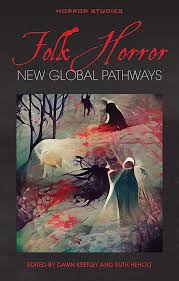 This article discusses the construction of phi pop as the monstrous figure of Thai folklore and proposes to read phi pop films as a classic example of Thai folk horror – a local sub-genre of horror whose main convention seems to be the representation of the insurmountable rural/urban divide. The films take different approaches to the topic, and the cinematic phi pop emerges as a figure of both comedy and horror, although in newer productions where the creature is no longer isolated in a remote village but rather follows rural migrants into the city, its portrayals are significantly more unnerving. The chapter provides a brief overview of Thai beliefs concerning the origin and characteristics of the creature and examines four films representative of most common approaches to Thai folk horror: Ban Phi Pop (Srisawat 1989), P (Spurrier 2005), Mekong Hotel (Weerasethakul 2012) and Pob (Ratanaruang 2018).
This article discusses the construction of phi pop as the monstrous figure of Thai folklore and proposes to read phi pop films as a classic example of Thai folk horror – a local sub-genre of horror whose main convention seems to be the representation of the insurmountable rural/urban divide. The films take different approaches to the topic, and the cinematic phi pop emerges as a figure of both comedy and horror, although in newer productions where the creature is no longer isolated in a remote village but rather follows rural migrants into the city, its portrayals are significantly more unnerving. The chapter provides a brief overview of Thai beliefs concerning the origin and characteristics of the creature and examines four films representative of most common approaches to Thai folk horror: Ban Phi Pop (Srisawat 1989), P (Spurrier 2005), Mekong Hotel (Weerasethakul 2012) and Pob (Ratanaruang 2018).
 This article discusses the construction of K-vampires in popular Korean television dramas, focusing on three series that feature central vampire characters: Vampire Prosecutor, a crime procedural running for two seasons in 2011 and 2012, its spin-off, Vampire Detective (2016) and a medical drama Blood (2015). The main protagonists in these series are all simultaneously vampires and members of professions designed to help humans: a lawyer, a detective and a surgeon. Constructed as parallel to humans, these vampires are portrayed as free-willed individuals striving to overcome their condition. The article argues that the humanisation of K-vampires can be seen as a hybridisation strategy blending the characterisation of the ‘reluctant’ vampires known from Western post-millennial fiction with some features of the Korean kumiho, a supernatural shape-shifting fox creature that desires to become human. The article also proposes to read the series in the Neo-Confucian context, particularly in relation to its social and gender norms. It argues that while the male vampires in the series function chiefly to deliver critique of Korean neoliberal society, with the heroes modelled on the virtuous seonbi scholars and the villains described as sociopathic capitalists, the female vampires are mostly portrayed as tragic heroines, vilified for their moral transgressions and redeemed through selfless sacrifice.
This article discusses the construction of K-vampires in popular Korean television dramas, focusing on three series that feature central vampire characters: Vampire Prosecutor, a crime procedural running for two seasons in 2011 and 2012, its spin-off, Vampire Detective (2016) and a medical drama Blood (2015). The main protagonists in these series are all simultaneously vampires and members of professions designed to help humans: a lawyer, a detective and a surgeon. Constructed as parallel to humans, these vampires are portrayed as free-willed individuals striving to overcome their condition. The article argues that the humanisation of K-vampires can be seen as a hybridisation strategy blending the characterisation of the ‘reluctant’ vampires known from Western post-millennial fiction with some features of the Korean kumiho, a supernatural shape-shifting fox creature that desires to become human. The article also proposes to read the series in the Neo-Confucian context, particularly in relation to its social and gender norms. It argues that while the male vampires in the series function chiefly to deliver critique of Korean neoliberal society, with the heroes modelled on the virtuous seonbi scholars and the villains described as sociopathic capitalists, the female vampires are mostly portrayed as tragic heroines, vilified for their moral transgressions and redeemed through selfless sacrifice.